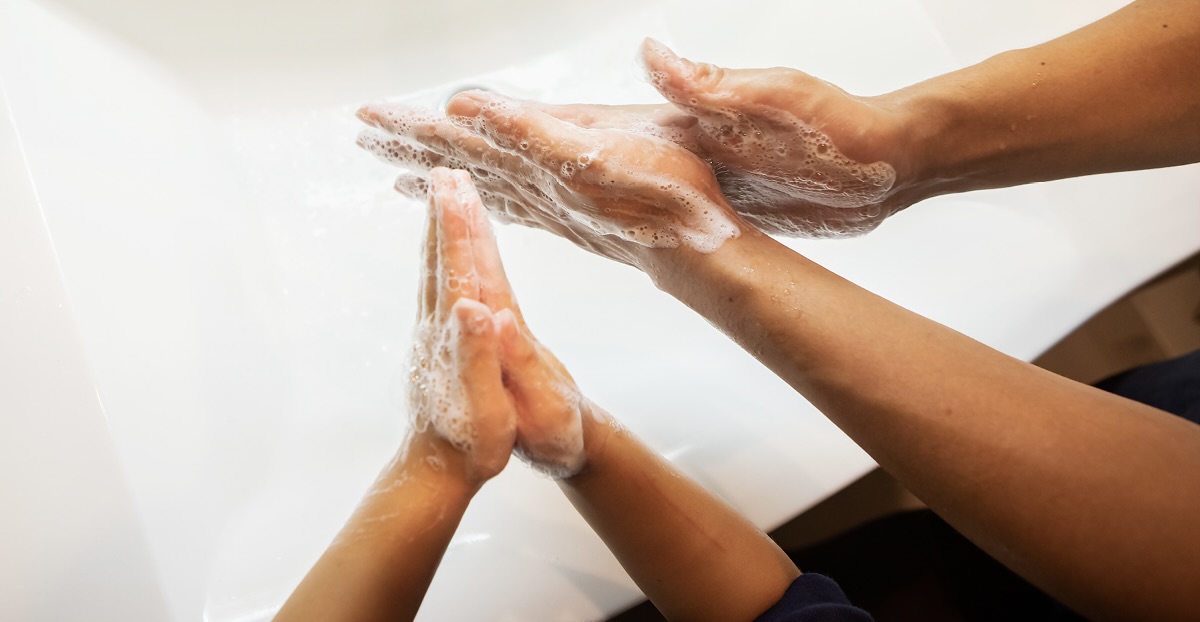How's Your Handwashing Technique? 8 Steps of Handwashing

Stay healthy by washing your hands properly for infection prevention.
Are you sure that your handwashing technique kills germs?? If your answer isn’t a definitive "yes," learn the eight steps of handwashing that will get your hands spotlessly clean every time.
Cell phones, door handles, shopping carts, and money are all items that are usually germ-ridden, even when they look clean.. People touch these surfaces and then may chew their fingernails, rub their eyes or scratch their nose — all places where mucus membranes introduce viruses to the rest of the body. In fact, according to the American Journal of Infection Control, the average person touches his or her face more than 20 times per hour.
Touching your own face is an impossible habit to break, but you can keep some of the germs away with good hand hygiene compliance. These eight handwashing techniques will help kill germs before they sicken you.
What is the proper handwashing technique?
It only takes about 20 seconds to kill most germs on your hands. Just use this handwashing technique recommended by the World Health Organization (WHO):
- Wet the surfaces of your hands with warm running water, apply a generous amount of soap and rub your palms together.
- Interlace your fingers to clean between them.
- Rub the palm of one hand against the back of the other, then reverse, to get the backs of both hands and fingers clean.
- Grip one thumb at a time and scrub around it.
- Cup your fingers into the palm of the opposite hands to wash the backs of your fingers.
- Don’t forget your fingernails! Scrub the tips of your fingers in a circular motion on the palm of the opposite hand.
- Finish by scrubbing your wrists one at a time.
- Rinse your hands thoroughly with warm – not hot – water and turn off the tap with your wrist, elbow or clean towel. Towel or air-dry hands thoroughly.
Bonus Tip: To ensure you’re washing long enough, count to at least 20 before rinsing off. Or, sing a short song to yourself, like “Twinkle, Twinkle, Little Star” or “Happy Birthday,” which both last about 20 seconds.
When should I wash my hands?
Our hands pick up viruses and germs from nearly everything they touch throughout the day. Frequent handwashing and proper handwashing technique will help you limit exposure and transfer of microbes that can spread diseases like a cold, flu, and coronavirus. In addition to washing your hands when they are visibly dirty, there are a number of other instances when hand washing is vital.
Wash your hands before and after:
- Touching potentially contaminated surfaces (like doorknobs, doors, cash, phones, or surfaces in public places)
- Touching your face, especially your eyes, mouth and nose
- Preparing meals for people or pets
- Eating or drinking
- Bandaging a wound
- Using the restroom
- Caring for someone who’s already sick
- Putting in or taking out contact lenses
- Blowing your nose, sneezing or coughing
- Handling household waste
You can give yourself an extra measure of protection by also washing your hands if it has been more than an hour or so since the last scrub-up. In that time, you may have touched your face dozens of times without even realizing you did it. When soap and water aren’t available, hand sanitizer is an acceptable Plan B.
A word about alcohol-based hand sanitizer…
Sanitizers are no substitute for good handwashing but will help in a pinch. Try to find a hand sanitizer that contains at least 60% alcohol; this strength is necessary to kill germs that can’t be washed away. Be aware that hand sanitizer alone does not work against norovirus.
To properly cleanse hands with hand sanitizer, squeeze a liberal amount into your hand and rub the gel over the front and back of hands and wrists until the liquid is fully evaporated.
If I use proper handwashing technique, can I still get sick?
Sometimes, no matter how diligent you are about hand hygiene, viruses can still catch up with you. If they do, BJC primary care providers are here to help. But don’t wait for illness to strike: Work with your primary care physician or nurse practitioner for your overall health to prevent getting sick in the first place.
Same day care
Having a primary care provider is your first step to preventive health and wellness, but if you get sick outside of regular business hours or need same-day care, we are here to help.
- Reserve a time at one of the BJC Medical Group’s Convenient Care locations.
- Schedule a virtual care appointment via video.
ABOUT PRIMARY CARE
A BJC primary care provider serves as your health partner, providing preventive health care and treatment for illnesses, injuries and chronic conditions. If you do not have one, find a primary care provider accepting new patients. Learn more
Recent News
Resources
Comfort and Joy: 7 Healthy Holiday Party Tips for a Safe Celebration
Article
Microplastics and How They Affect the Body
Resources
Strong Bones for Life: How Women Can Prevent Osteoporosis
Resources
Get Moving Again: Advanced Nerve Injury Care at Barnes-Jewish Hospital
Resources
Shoulder Surgery: More Options, Longer-Lasting Results
Resources